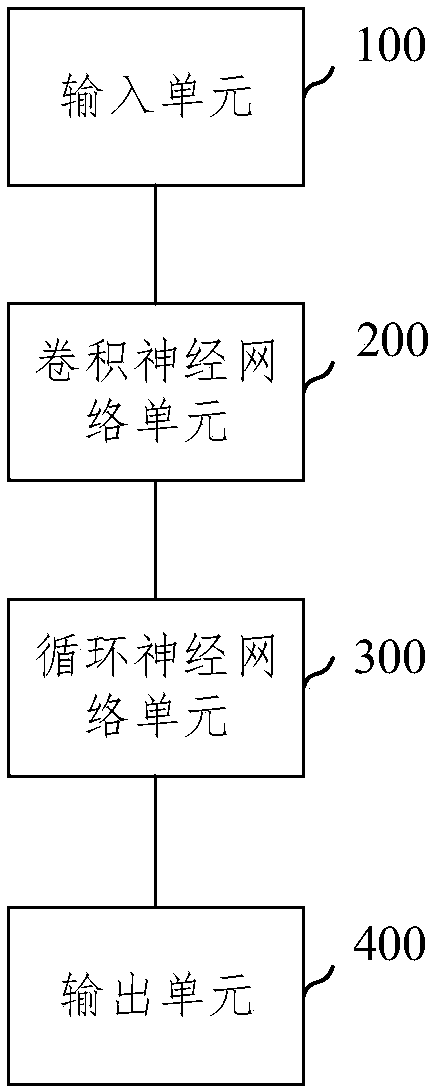Arrhythmia detection system based on deep neural network
A deep neural network and arrhythmia technology, applied in the field of neural networks, can solve the problems of inaccurate detection results, and achieve the effect of improving accuracy
- Summary
- Abstract
- Description
- Claims
- Application Information
AI Technical Summary
Problems solved by technology
Method used
Image
Examples
Embodiment 1
[0042] figure 1 It is a schematic diagram of an arrhythmia detection system based on a deep neural network according to an embodiment of the present invention, such as figure 1 As shown, the embodiment of the present invention provides a deep neural network-based arrhythmia detection system, including a segmentation module 10 and a detection module 20, wherein,
[0043] The segmentation module 10 is used to segment the acquired K-lead ECG data of the patient to be detected in chronological order, and obtain multiple K-lead ECG data segments, each of which has the same length as the K-lead ECG data segments , K is a positive integer;
[0044] The detection module 20 is used to input the plurality of K-lead ECG data segments into the trained deep neural network model in order of time to obtain the type of arrhythmia of the patient to be detected.
[0045] Further, it also includes:
[0046] The training module is used to obtain the training sample set, the training sample set...
Embodiment 2
[0076] image 3 A schematic structural diagram of an electronic device for arrhythmia detection provided by an embodiment of the present invention, such as image 3 As shown, the device includes: a processor (processor) 801, a memory (memory) 802 and a bus 803;
[0077] Wherein, the processor 801 and the memory 802 complete mutual communication through the bus 803;
[0078] The processor 801 is used to call the program instructions in the memory 802 to perform the following steps:
[0079] The obtained K-lead ECG data of the patient to be detected is segmented and processed in chronological order, and multiple K-lead ECG data segments are obtained, the length of each K-lead ECG data segment is equal, and K is a positive integer;
[0080] The plurality of K-lead ECG data segments are respectively input into the trained deep neural network model according to the order of time to obtain the type of arrhythmia of the patient to be detected.
Embodiment 3
[0082] An embodiment of the present invention discloses a computer program product, the computer program product includes a computer program stored on a non-transitory computer-readable storage medium, the computer program includes program instructions, and when the program instructions are executed by a computer, The computer is capable of performing the following steps:
[0083] The obtained K-lead ECG data of the patient to be detected is segmented and processed in chronological order, and multiple K-lead ECG data segments are obtained, the length of each K-lead ECG data segment is equal, and K is a positive integer;
[0084] The plurality of K-lead ECG data segments are respectively input into the trained deep neural network model according to the order of time to obtain the type of arrhythmia of the patient to be detected.
PUM
 Login to View More
Login to View More Abstract
Description
Claims
Application Information
 Login to View More
Login to View More - R&D
- Intellectual Property
- Life Sciences
- Materials
- Tech Scout
- Unparalleled Data Quality
- Higher Quality Content
- 60% Fewer Hallucinations
Browse by: Latest US Patents, China's latest patents, Technical Efficacy Thesaurus, Application Domain, Technology Topic, Popular Technical Reports.
© 2025 PatSnap. All rights reserved.Legal|Privacy policy|Modern Slavery Act Transparency Statement|Sitemap|About US| Contact US: help@patsnap.com



